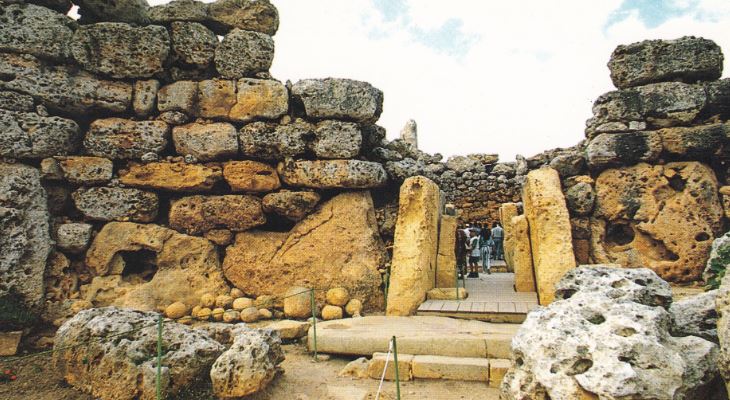Malta’s honey-coloured limestone is possibly one of the most recognisable features of local architecture. From ancient walls to Megalithic temples, the Maltese Globigerina limestone has been part of local heritage for centuries. And now, it has been granted a special heritage designation – the Global Heritage Stone Resource (GHSR) status.

Nadine Fischer / Flickr
Malta’s limestone now joins a highly exclusive family of 15 other worldwide national rocks and stones which have been used historically and for a significant period of time, and so are recognised as cultural icons. The Globigerina limestone definitely fits the bill!
The Maltese limestone can be seen around the Maltese Islands in various forms, and here are six of them to look out for.
1. Megalithic temples
The prehistoric temples are possibly the best locations to see the Globigerina limestone still intact after centuries. Visit the temples of Ħaġar Qim and Mnajdra to get a taste of these wondrous Megalithic temples that are said to be the oldest free-standing stone structures in the world. Yes, they’re older than the Pyramids of Egypt!
2. Walls
The winding walls of Mdina are also built with the local limestone. Practically all the architecture found in the Silent City was constructed using Globigerina. Venturing through the narrow streets will give you a closer look at this magnificent limestone.
3. Towers
The Gardjola Tower, an ancient guard tower in Senglea is perched on the bastion overlooking views of the Grand Harbour. The Globigerina limestone tower has engravings all around: symbols such as eyes, ears and the crane bird, representing guardianship and protection over Maltese shores.
4. Bastions
The bastion walls of the Maltese fortified cities were all built using Globigerina limestone. Be it Birgu, Valletta, Mdina, or the Citadel in Gozo, these cities have withstood the test of time and still remain fully intact to this day, centuries after wars and battles.
5. Churches
The Globigerina limestone is perfect for sculpting and engraving in stone. Ta’ Pinu Basilica in Gozo has intricate décor both inside and outside, with statues and symbols etched out of this stone to create magnificent structures.
6. Aqueducts
The Wignacourt aqueducts that cross Attard and Mrieħel to Fleur de Lys is one of the structures built by the Order of the Knights of St John using the local limestone. While parts of the aqueduct were destroyed over the years, part of the archways are still intact.
What do you think of our local limestone's award? Keep your eyes peeled for the historical structures!